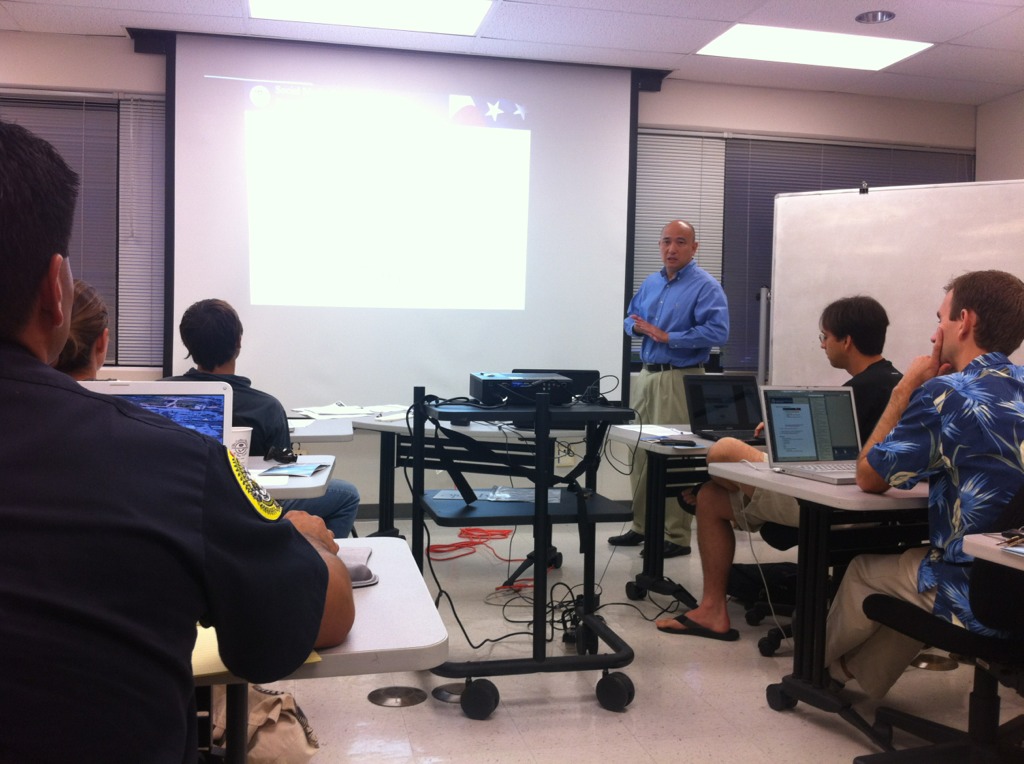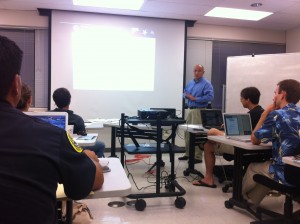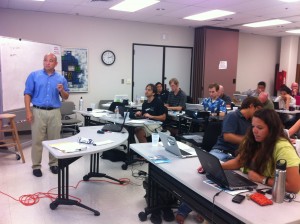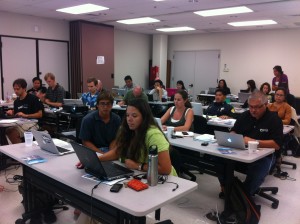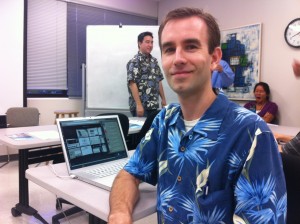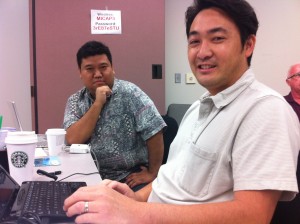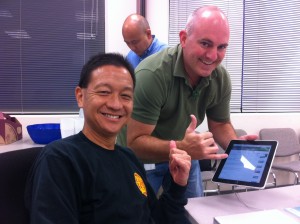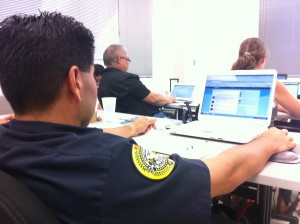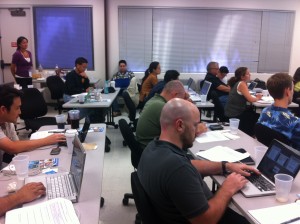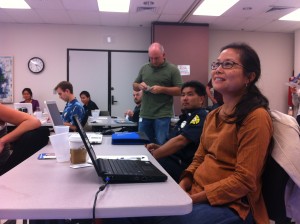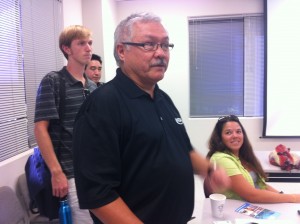Social Media Program for Disaster Response Demonstrated
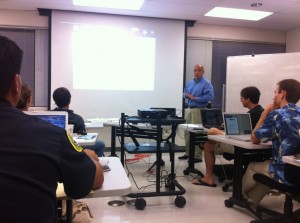 Today at the Manoa Innovation Center, the National Disaster Preparedness Training Center (NDPTC) held a pilot demonstration of a new course, “Social Media for Natural Disaster Response & Recovery.”
Today at the Manoa Innovation Center, the National Disaster Preparedness Training Center (NDPTC) held a pilot demonstration of a new course, “Social Media for Natural Disaster Response & Recovery.”
The NDPTC is partnered with the Department of Homeland Security (DHS) and the Federal Emergency Management Association (FEMA), and is a member of the National Domestic Preparedness Consortium. Its purpose is providing critical all-hazards training throughout the United States and its territories with an emphasis on natural hazards and island and coastal communities.
The local program was coordinated by Dave Kozuki (@DaveKozuki), founder and CEO of People Bridge. He was assisted by NDPTC team members that included Gabrielle Sham, Grant Chartrand, James Burke, Jon Hagihara, and Renee Kimoto.
The course was designed to cover social media and its uses, current tools, methods, and models to utilize social media for crisis communication, in order to “enhances the participant’s ability to build an organization’s communications strategy for disaster preparedness, response, and recovery.”
During today’s pilot, over two dozen participants followed Kozuki and Sham through a 189-page, seven module guide that started with defining and introducing social media and concluded with advanced monitoring and data mining techniques.
The participants included representatives from government agencies (including Forest Frizzel, deputy director of the city’s Information Technology department, and Brian Shiro from the Pacific Tsunami Warning Center), educators (including Susan Horowitz with the UH Pacific New Media program), business people (including Tina Sprague of Energy Industries and isle Realtor Rick Nakama), and social media enthusiasts (including community developer L.P. “Neenz” Faleafine).
As part of the course, all participants signed up for Twitter, and I created a Twitter List that you can follow here.
A key purpose of the demonstration was to collect feedback from social media practitioners on how to refine the curriculum and its presentation, as it is ultimately developed for first responders nationally. The NDPTC is also looking for instructors for the class, so today’s session was the first step in qualifying to serve in that capacity.

